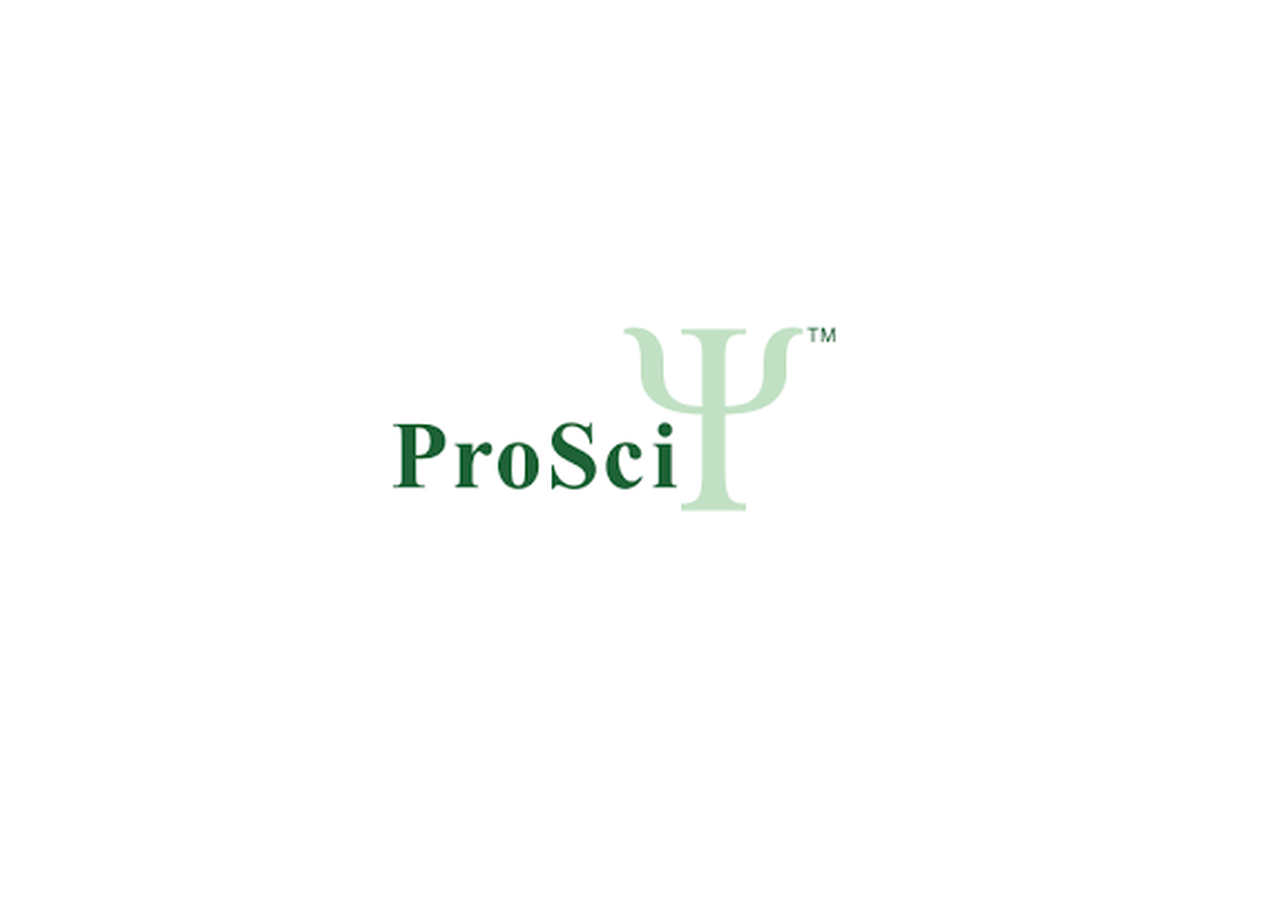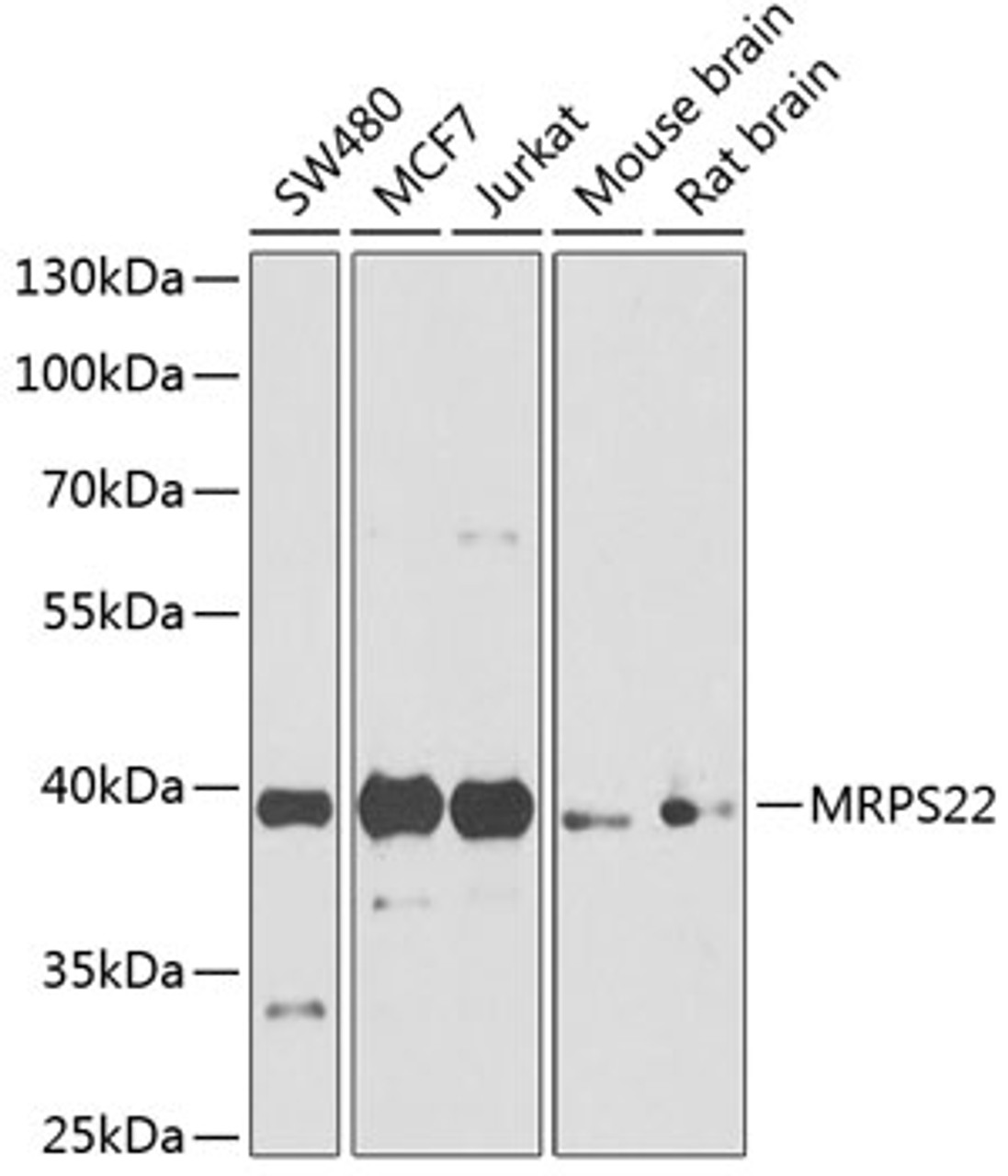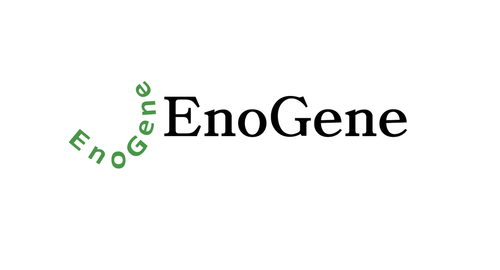Product Description
MRPS22 Antibody | 14-532 | ProSci
Host: Rabbit
Reactivity: Human, Mouse, Rat
Homology: N/A
Immunogen: Recombinant fusion protein containing a sequence corresponding to amino acids 1-360 of human MRPS22 (NP_064576.1) .
Research Area: Other
Tested Application: WB, IHC
Application: WB: 1:500 - 1:2000
IHC: 1:100 - 1:200
Specificiy: N/A
Positive Control 1: SW480
Positive Control 2: MCF7
Positive Control 3: Jurkat
Positive Control 4: Mouse brain
Positive Control 5: Rat brain
Positive Control 6: N/A
Molecular Weight: Observed: 41kDa
Validation: N/A
Isoform: N/A
Purification: Affinity purification
Clonality: Polyclonal
Clone: N/A
Isotype: IgG
Conjugate: Unconjugated
Physical State: Liquid
Buffer: PBS with 0.02% sodium azide, 50% glycerol, pH7.3.
Concentration: N/A
Storage Condition: Store at -20˚C. Avoid freeze / thaw cycles.
Alternate Name: C3orf5, COXPD5, GIBT, GK002, MRP-S22, ODG7, RPMS22, 28S ribosomal protein S22, mitochondrial, S22mt, mitochondrial small ribosomal subunit protein mS22
User Note: Optimal dilutions for each application to be determined by the researcher.
BACKGROUND: Mammalian mitochondrial ribosomal proteins are encoded by nuclear genes and help in protein synthesis within the mitochondrion. Mitochondrial ribosomes (mitoribosomes) consist of a small 28S subunit and a large 39S subunit. They have an estimated 75% protein to rRNA composition compared to prokaryotic ribosomes, where this ratio is reversed. Another difference between mammalian mitoribosomes and prokaryotic ribosomes is that the latter contain a 5S rRNA. Among different species, the proteins comprising the mitoribosome differ greatly in sequence, and sometimes in biochemical properties, which prevents easy recognition by sequence homology. This gene encodes a 28S subunit protein that does not seem to have a counterpart in prokaryotic and fungal-mitochondrial ribosomes. This gene lies telomeric of and is transcribed in the opposite direction from the forkhead box L2 gene. A pseudogene corresponding to this gene is found on chromosome Xq.
 Euro
Euro
 USD
USD
 British Pound
British Pound
 NULL
NULL














